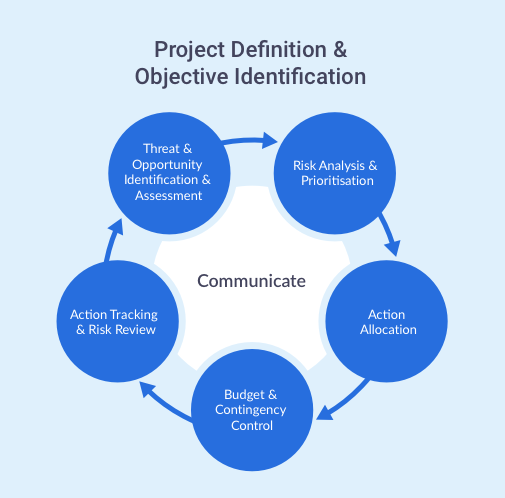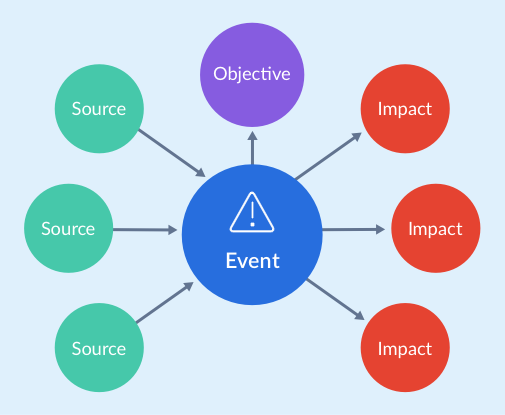There's nothing better than the feeling of being in control. Whether it's driving a fast car, being in control of your finances, or taking control of your work-life balance, being the master of your own destiny is a feeling like no other.
That Feeling of Being in Control
How well do you feel in control of the risks on your project? Do you know how much exposure you have? Do you know who is taking the necessary actions to prevent or protect against a risk occurrence? And, what about all the opportunities just waiting to be seized? Are they being managed to achieve optimum performance?
If your organisation is still using spreadsheets or heat maps to ‘do risk management’ on projects, then you're not in control. It's like driving a powerful car with one hand tied to the indicator – you can tell people where you want to go, but lack full possession of the steering wheel, and you're at the whim of the road conditions.
How Do You Take Back Control?
Taking back control of project risks is a journey which starts by recognising that not every worry raised by the project team is in fact a risk. Too often worries, personal hobby horses, and doubts pollute risk registers, and become a distraction from the job of delivering the project on cost and within desired timescales.

Before anything else can be considered, your team needs a clear understanding of the project context and the objectives it's attempting to achieve. Linking opportunities and threats to these objectives throughout the risk management process and understanding how uncertainty can influence is critical to knowing risk priorities. Unless a clear link can be established between a worry and an objective, which has either a positive or negative effect on the objective, the concern cannot be considered an actual risk.
Identification of the new threats and opportunities needs to be a simple affair that enables any member of the team to flag a potential risk with minimal training or effort. Once captured, the risk can be assessed for consideration for inclusion in the risk register. Accepting or rejecting potential risks is a critical role of the risk professional and introduces control to prevent irrelevant content, duplication, and distractions from distorting the risk data.
When considering what constitutes a threat or an opportunity, ambiguous language can confuse cause, event, and consequence, resulting in poor data being captured. To take control of risk means taking control of the meaning of each risk. Although being clear and concise is important, describing risk can be simplified by using risk meta language structured around the bow tie model.

The bow tie model requires the different sources of uncertainty to be identified, and the various impacts of the event, be they cost, time or some other quantity, to be explicitly recognised and recorded. In so doing, the ambiguity disappears, and a clear and actionable description emerges.
No Control Without Action
Having established the causes and consequences of an uncertain event, it is now possible to understand the actions required to either prevent or promote the event occurring.
Of course, taking any actions will come at a cost so it's imperative that the investment analysis considers the available budgets, and is prioritised to ensure maximum benefit. Prioritisation of risks is usually achieved by comparing the likelihood and impact of the risks.
However, to take control of budgets it's more effective to consider the cost benefits achievable through action or inaction. For many risks a simple toleration of the impact is within the appetite of the project. For others, a substantial investment is required to treat or avoid a risk from occurring, in which case it is imperative to understand how beneficial the action is likely to be.
Having made the choice over which risks to action, it's necessary for people to get off their chairs and actually do something. Without action, risk management is nothing but a waste of effort. This is where team control becomes an essential tool. Being able to monitor the progress of actions enables the project teams to really ensure that objectives can be met. Allocation of actions to the right people, ensuring that they have the necessary budgets, tools and other resources to achieve the goal, are all fundamental in running a successful project.
Budgets, Contingency, and Money Management
Despite their greatest desires, it must always be made clear to the finance controllers that uncertainty is not deterministic. They will want to know a single figure of how much risk there is. Meanwhile, the risk manager will look at models and determine whether a P50 or P80 confidence value on their one-off analysis chart is an appropriate answer.
However, knowing how much financial risk exposure exists throughout the life cycle of the project means that budgets for contingency can be allocated and metered out appropriately. Monitoring of contingency, both as it's transferred within the project, spent on maturing risks, or released to project margin, ensures that control over exposure is maintained.
A continuously updated, probabilistic view of the risk data enables the project team to select a confidence value against which they can report the value of risk exposure without having to re-run cost analysis models. This ensures one version of the truth is available to all members of the project team and puts budgetary control back into the hands of the project manager.
Tracking Change and Communicating Success
As the project progresses through its life cycle, new risks will be identified, unforeseeable issues and opportunities will emerge. Against this constantly changing background it's difficult to stay in control of everything that is going on when managing through spreadsheets and email. The project management team are required to monitor the changes both internal and external to the project and ensure that changes are being made to keep the project on track.
Knowing that actions are being closed out in time, contingency is being released effectively, and new threats and opportunities are being recognised and recorded efficiently is a fundamental aspect of keeping the project running smoothly.
Keeping everyone informed, from the work package manager to the project director is the most critical element in controlling any project. When communication is poor, assumptions are made, and mistakes happen. Indeed, it can be argued that the biggest risk to any project is the internal failure to communicate. Any risk management tool should have communication as its central element.
Using concise dashboards, email, and effective reporting capability, any project can take control of communicating its risk data to relevant stakeholders. This ensures opportunities are brought to fruition whilst threats are avoided with minimum penalty.
Safran Risk Manager Gives You Control
Designed with control at its core, Safran Risk Manager gives every project team the ability to record, track, and communicate its risk data across the whole team.
Designed by risk managers for risk managers, the interface minimises effort whilst providing immediate results, which enables the team to start making informed information-based decisions.
Seize control of your project’s risks with Safran Risk Manager.



